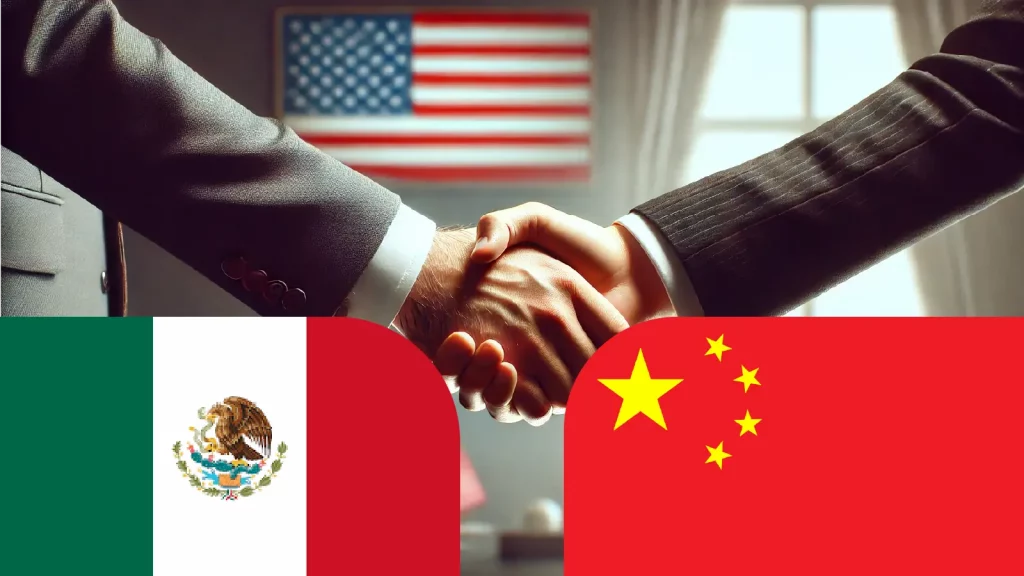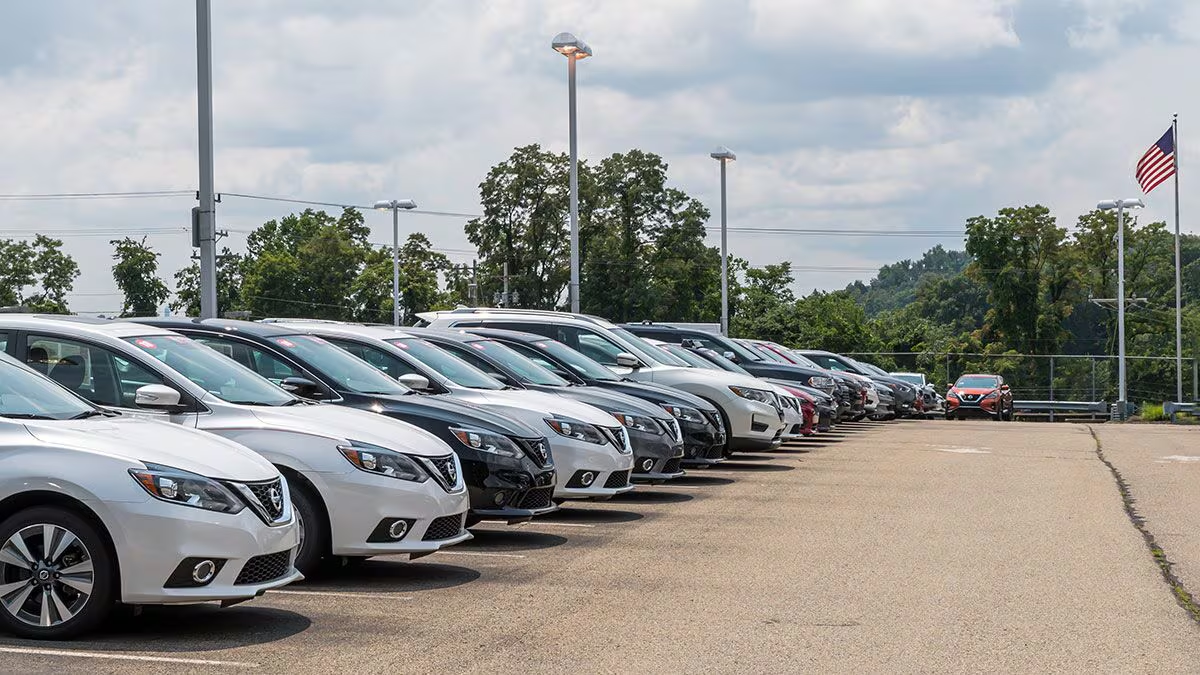
As Chinese electric vehicle (EV) makers face U.S. tariffs, Mexico emerges as a key player in their North American strategy. Could Mexico become the new entry point for Chinese cars into the U.S.?
DOWNLOAD Chinese Cars in Mexico PDF
The Rise of Chinese EVs in Mexico
In recent years, Mexico has become a significant destination for Chinese electric vehicles. With Chinese car exports to Mexico reaching a whopping $4.6 billion last year, it’s clear that China has made substantial inroads into the Mexican automotive market. This surge is no accident—Chinese automakers have aggressively targeted Mexico, offering vehicles that are not only competitively priced but also technologically advanced.
Take BYD, for example, which has positioned its Dolphin Mini in Mexico for around 398,800 pesos (about $21,300). This pricing makes it incredibly attractive compared to other options like Tesla, whose models are often priced at more than double that amount. Juan Carlos Baker, former Mexican deputy minister for international trade, noted, “The Chinese automakers came to the country very aggressively. They have very good promotions. It’s a good product that sells at a very reasonable price.”
But what does this influx of Chinese EVs in Mexico mean for the United States?
A Potential Backdoor to the U.S. Market
The U.S. has been vigilant about protecting its auto industry, particularly as it ramps up its own EV production. President Joe Biden even announced a 100% tariff on Chinese EVs to shield American manufacturers from foreign competition. Yet, despite these barriers, Chinese automakers may have found a workaround—Mexico.
Thanks to the United States-Mexico-Canada Agreement (USMCA), Mexico has become an attractive hub for automotive production. This agreement, a modernized version of NAFTA, allows vehicles manufactured in Mexico or Canada to enter the U.S. with little to no tariffs, provided they meet specific local content requirements. This free trade access is a golden opportunity for Chinese automakers to potentially bypass U.S. tariffs by setting up shop in Mexico.
Scott Paul, president of the Alliance for American Manufacturing, expressed concern over this strategy, saying, “Mexico is an attractive production platform, not only for Chinese companies but for other companies as well, in part because of that free trade access that it has to the American market. And it can do something that in trade terms is called circumvention.”
The Strategy Behind China’s Move
For Chinese automakers, establishing a manufacturing presence in Mexico isn’t just about accessing the Mexican market—it’s about gaining a foothold in North America. Companies like BYD are already exploring factory sites in Mexican states like Durango, Jalisco, and Nuevo Leon. BYD has claimed that building a plant in Mexico could create around 10,000 jobs, offering a significant economic boost to the region.
This move is strategic on multiple levels. By manufacturing in Mexico, Chinese automakers can not only sidestep hefty U.S. tariffs but also position themselves closer to one of the largest automotive markets in the world. And it’s not just about cutting costs—it’s about being in a prime location to serve the entire North American market.
U.S. Concerns and the Risk of “Circumvention”
The possibility of Chinese cars entering the U.S. through Mexico has raised alarms among U.S. lawmakers and industry leaders. The term “circumvention” refers to the practice of routing products through third countries to avoid tariffs or trade restrictions. In this case, it’s feared that Chinese automakers might meet the USMCA’s local content requirements just enough to qualify for tariff-free access to the U.S., despite the cars being primarily of Chinese origin.
“We’ve seen China do this in other types of manufacturing as well, from appliances to auto parts to steel,” said Paul. “For more than a decade now, China and the United States have been playing a high-stakes game of whack-a-mole when it comes to trade policy tariffs.”
The fear is that if Chinese EV makers establish a strong presence in Mexico, they could flood the U.S. market with cheaper, tariff-free vehicles. This could pose a significant threat to U.S. automakers, particularly as they are just beginning to scale up their own EV production. Michael Dunne, CEO of Dunne Insights, pointed out, “If [Chinese EV makers] are able to set up in Mexico, they would definitely pose an imminent threat to American automakers, if for no other reason, because their costs would be lower.”
Mexico’s Dilemma: Balancing Relations with China and the U.S.
Mexico finds itself in a challenging position. On one hand, Chinese investment in the country could be a major economic boon. The jobs, technology, and infrastructure that come with new automotive plants could help Mexico’s economy grow. On the other hand, Mexico must maintain its crucial relationship with the United States, which is wary of China’s intentions.
Experts say that the pressure from the U.S. leaves Mexico in a difficult spot. On the one hand, turning away Chinese investment could mean missing out on significant economic opportunities. On the other hand, being too accommodating to Chinese automakers could strain relations with the U.S., Mexico’s largest trading partner.
So, what’s Mexico to do? It’s a delicate balancing act—one that could have major implications for the future of North American trade and the automotive industry.
What This Means for the Future of North American Auto Trade
The growing presence of Chinese EVs in Mexico is more than just a trade story; it’s a glimpse into the future of the global auto industry. As the world transitions to electric vehicles, the strategies employed by different countries and companies will shape the industry for decades to come.
If Mexico becomes a new gateway for Chinese cars into the U.S., we could see significant shifts in market dynamics, pricing, and competition. U.S. automakers, who are still in the early stages of scaling up their EV production, could find themselves under pressure to innovate faster and cut costs to remain competitive.
But beyond the economic implications, this situation also raises broader questions about global trade, geopolitics, and the balance of power in the automotive industry. As Chinese automakers continue to expand globally, how will countries like the U.S. and Mexico respond? And what does this mean for consumers and the future of mobility in North America?
Final Thoughts
The possibility of Mexico becoming the new entry point for Chinese cars into the U.S. is a development that could have far-reaching consequences. It highlights the complex interplay between trade policy, global competition, and national interests. As Mexico navigates its relationships with both China and the U.S., the decisions made in the coming years could reshape the North American auto industry.
What do you think—will Chinese cars soon be rolling into the U.S. from Mexico?



